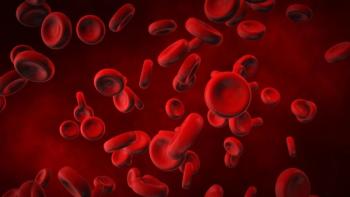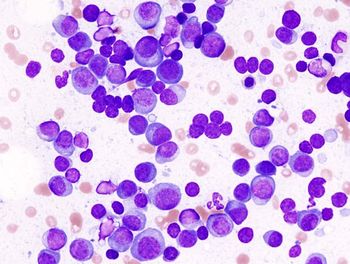
Miami Breast Cancer Conference® Abstracts Supplement
- 41st Annual Miami Breast Cancer Conference® - Abstracts
- Volume 38
- Issue 4
- Pages: 14-15
11 Phase 3 Study of Neoadjuvant Pembrolizumab or Placebo Plus Chemotherapy, Followed by Adjuvant Pembrolizumab or Placebo Plus Endocrine Therapy for Early-Stage High-Risk ER+/HER2– Breast Cancer: KEYNOTE-756
Background
KEYNOTE-756 is a global phase 3 study of neoadjuvant pembrolizumab or placebo plus chemotherapy followed by adjuvant pembrolizumab or placebo plus endocrine therapy (ET) in patients with early-stage high-risk estrogen receptor–positive (ER+)/HER2-negative breast cancer. Here, we report primary pathologic complete response (pCR) results and residual cancer burden (RCB) outcomes.
Methods
Eligible patients with T1c-2 (≥ 2 cm) cN1-2 or T3-4 cN0-2, centrally confirmed, grade 3, invasive ductal ER+/HER2-negative breast cancer were randomly assigned 1:1 to receive neoadjuvant pembrolizumab at 200 mg every 3 weeks or placebo, both given with paclitaxel each week for 12 weeks, then 4 cycles of doxorubicin or epirubicin plus cyclophosphamide (neoadjuvant treatment). After definitive surgery (± radiation therapy), patients received pembrolizumab or placebo for 9 cycles plus standard ET. Stratification factors include region (Eastern Europe, China, or other), tumor PD-L1 status (CPS ≥ 1 [positive] vs CPS < 1 [negative]), nodal involvement (positive vs negative), ER positivity (≥ 10% vs < 10%) and anthracycline schedule (every 3 weeks vs every 2 weeks). Dual primary end points are pCR (ypT0/Tis ypN0) and event-free survival (EFS). Secondary end points include overall survival, pCR defined as ypT0 ypN0 and ypT0/Tis, and safety. RCB was an exploratory end point and was assessed by a local pathologist at the time of surgery. RCB-0, -1, -2, and -3 denote increasingly larger residual disease.
Results
One thousand two hundred seventy-eight patients were randomized to pembrolizumab plus chemotherapy (n = 635) or placebo plus chemotherapy (n = 643). At the final pCR analysis (May 25, 2023, first interim analysis data cutoff), the median follow-up was 33.2 months (range, 9.7-51.8). In the intent-to-treat population, pembrolizumab plus chemotherapy showed a statistically significant improvement in pCR (ypT0/Tis ypN0) vs placebo plus chemotherapy: 24.3% (95% CI, 21.0-27.8) vs 15.6% (95% CI, 12.8-18.6); estimated difference, 8.5 percentage points (95% CI, 4.2-12.8); P = .00005; results were consistent for the secondary pCR definitions, ypT0 ypN0 (21.3% vs 12.8%) and ypT0/Tis (29.4% vs 18.2%). The benefit of pembrolizumab plus chemotherapy on pCR was generally consistent in the prespecified subgroups. There were more patients with RCB-0 (24.7% vs 15.6%) and RCB-1 (10.2% vs 8.1%) and fewer patients in the RCB-2 (40.8% vs 45.3%) and RCB-3 categories (20.5% vs 28.9%) in the pembrolizumab group vs the placebo group. In the neoadjuvant phase, grade 3 or higher treatment-related adverse effects rates were 52.5% with pembrolizumab plus chemotherapy and 46.4% with placebo plus chemotherapy, with 1 death in the pembrolizumab arm due to acute myocardial infarction. EFS results are still immature and continue to be evaluated.
Conclusions
The addition of pembrolizumab to chemotherapy significantly increased the pCR rate and shifted RCB to lower residual disease categories in patients with early-stage high-risk ER+/HER2-negative breast cancer. Safety was consistent with the known profiles of each regimen.
Articles in this issue
Newsletter
Stay up to date on recent advances in the multidisciplinary approach to cancer.

















































































